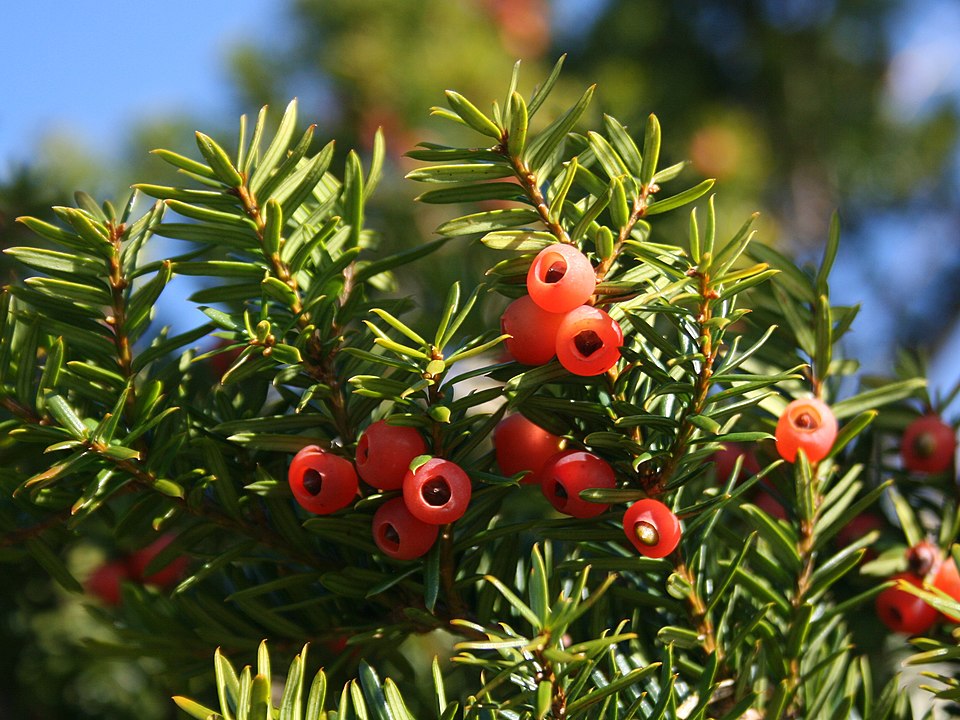Ditch the Leyland Cypress, Bradford Pear Trees for These Alternatives
Aidan Stewart

Last month we featured two articles about what not to plant in your yard: the Leyland cypress and Bradford pear trees. Today I’d like to share some options that could serve as a great alternative to these trees.
When it comes to privacy screening, there’s a reason the Leyland cypress has been so popular for so long. It’s fast-growing and offers a solid wall of green (until it doesn’t anymore). Here are some better, longer-lasting options for screening hedges at your property.
- Hollies: Hollies are a great choice for a screening hedge. They’re cold-hardy and long lived. One thing that they have over lots of other options is their ability to handle wet and dry conditions a bit better. I usually recommend Nellie Stevens, Oakleaf, and Foster holly varieties. There’s usually a variety for every situation.
- Yew: Yews are a great evergreen shrub for shady areas, and can be very long lived. The Japanese plum yew is a great choice.

- Juniper: If you really like the look of an evergreen tree such as the Leyland cypress, junipers can be a great alternative. Spartan junipers are a great choice, usually reaching a mature height of around 15 feet. Keep in mind that junipers prefer well-drained soil.
- Camellia: Known for their showy flowers, camellias are more often seen as a stand alone shrub than in a screening hedge, but can absolutely be planted as one. There’s a multitude of flower colors and sizes to choose from, so if you’d like something with some added color, this might be a good option.
- Hornbeam: If year-round privacy is not important to you, a Hornbeam hedge could be a great option. This is the only tree that loses its leaves on the list, so in the winter time you can see right through it (although the stems tend to offer at least some screening). This is a great option for someone looking for a unique option, or if you don’t need a solid wall of privacy.
As we talked about in our Bradford pear article, these trees were planted for their showy flowers and fast rate of growth. While these benefits seem great, the shortcomings of the Bradford Pear have outweighed the benefits over the years. Here are some better options for a flowering tree that won’t suffer from the same issues.
- Dogwood: There’s a chance you might already have a Dogwood on your property, but you may be able to mix up your landscape by adding another variety. Kousa Dogwood, which is native to Asia, is a great choice for its large white flowers and unique bark patterns
- Serviceberry: My personal favorite tree to plant. Serviceberry trees offer year-round beauty in their white flowers, gorgeous fall color, and dark purple berries (which are technically edible!). Most commonly planted as a multi-stemmed tree (think crepe myrtle), they’re also available with a single stem.

- Fringe tree: Fringe trees have one of the most unique flowers I can think of with its large clusters of delicate white blooms. This is a great choice for a small- to medium-sized tree.
- Red buckeye: Growing to a height of 15-20 feet, this is another great choice for a small to medium tree. This is the only tree on the list with a red flower, and it’s quite a spectacle!
If you’re looking to plant a tree (or trees) in your yard, please give us a call. We love to plant trees, and while the scope of some planting projects might be better suited for other services, we can help with tree selection and planting guidance, as well as aftercare. One thing that’s worth mentioning is HOA requirements for planting. Some HOA’s require specific trees and heights. If you have a list of approved trees from your HOA, we can help select the right tree from the given options.


